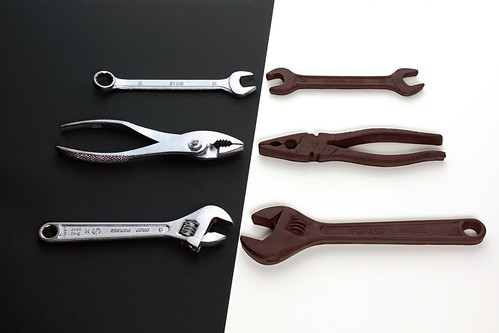 The one question I’m always asked by people who want to become technical writers is “What tools do I need to know?”
The one question I’m always asked by people who want to become technical writers is “What tools do I need to know?”
Usually I say “It depends…” but I’ve come to realize that one tool alone is the most useful for new technical writers to learn.
Microsoft Word.
I can hear the howls of protest, but just wait a minute while I explain my reasoning.
Everyone thinks they can use Word, but are they using it like a technical writer? No. You can learn to use features in Word that will help you learn other technical writing tools. Grab a pen, write down these things, and then practice using them.
1. Styles.
I don’t mean applying bold or underline by selecting text and clicking the icon in the tool bar. I mean setting up paragraph and character styles, and then applying them consistently throughout your document. Take your resume, for example. Have you used heading styles for headings, bullet or number styles for lists, body text styles for paragraphs? The first thing I look at when I’m reviewing technical writer resumes is styles. If I see inline formatting, I assume the person doesn’t have much experience, despite what their resume says. Sounds harsh, but it’s true. Your resume should showcase your technical writing skills. And knowing how to apply styles is a vital skill that you can easily port to other technical writing tools. Learn to use styles!
2. Generate a table of contents.
Once you’ve learned to use styles, especially heading styles, you can generate a table of contents. When I say generate, I mean that Word can cleverly find all your headings and create a table of contents for you. But don’t edit the generated table of contents manually, because the next time someone presses F9 in your document, it’ll be updated automatically, and you’ll lose your manual changes. If you need to change something, go back to the source heading and change it there.
3. Keep the text inline, don’t use floating text boxes.
This one is important if your document will be translated or localized. Companies often send their documents out to big localization houses, which suck your text out of the document, translate it, then plop it back in. If you use floating text boxes, the text can end up lost or misplaced. If you need your text to sit outside the margin, create a custom style for the text. If you know this, you’ll keep the localization manager happy by keeping localization costs down.
4. Review the document properties.
Documents generally contain metadata such as who created them and when they were last edited. As a technical writer, you don’t want to send out a document that contains an incorrect company name or other information that could be embarrassing. Always check the document properties and update them with the approved details. Some companies prefer documents not to include your personal name, but rather to be written by the “Technical Documentation Department” or something similar.
If you know how to do these four things in Word, you’ll already be ahead of the other writers who think technical writing is just about the writing – it’s not! And if you’re still worried about learning other technical writing tools, visit the company websites. Often they have free trials, so you can download the software to your computer at home, and practice making a help system out of your resume or the novel you’ve got hiding under the bed.
Here are a few to get you started:
Flare, RoboHelp, FrameMaker, InDesign
Photo via Flickr user JanneM